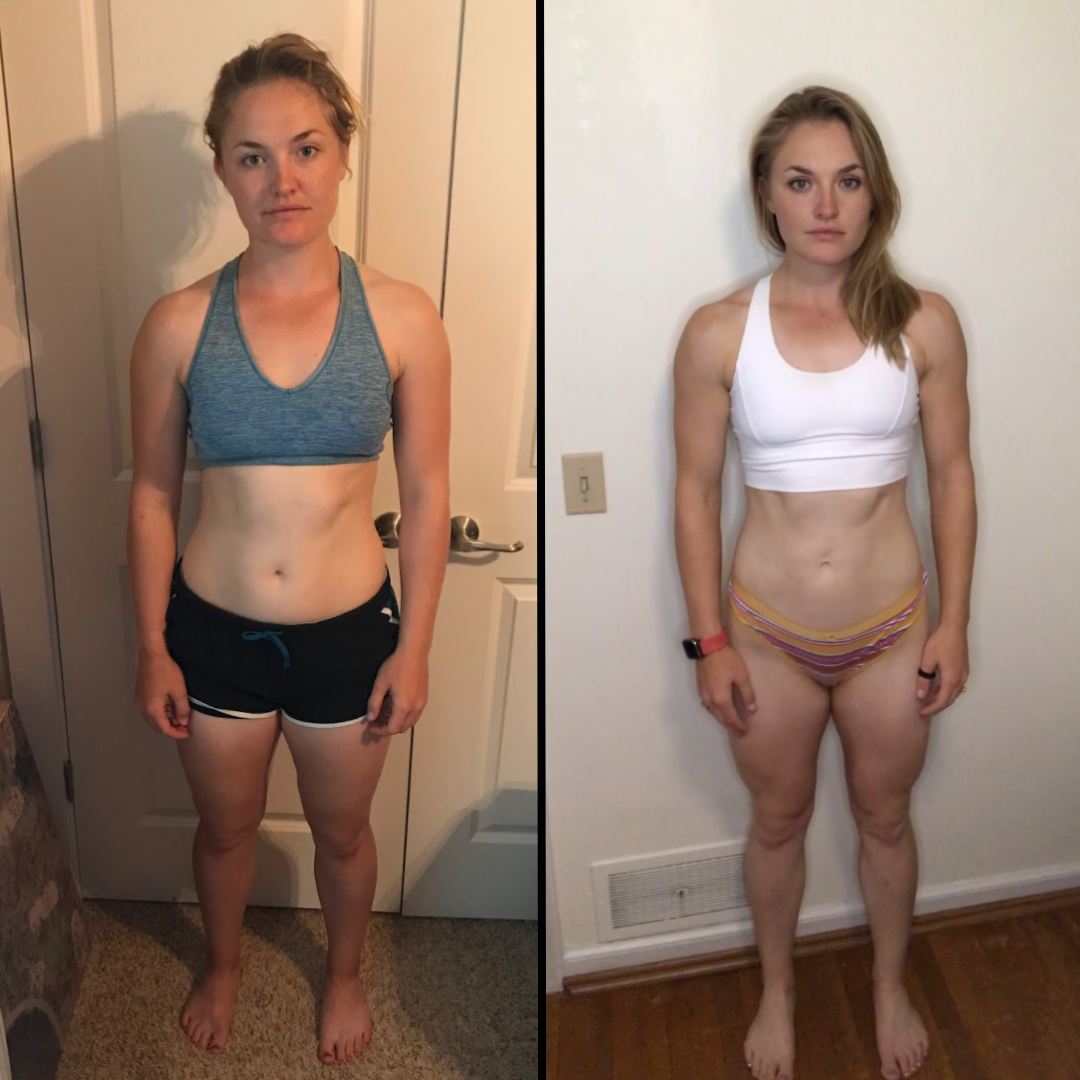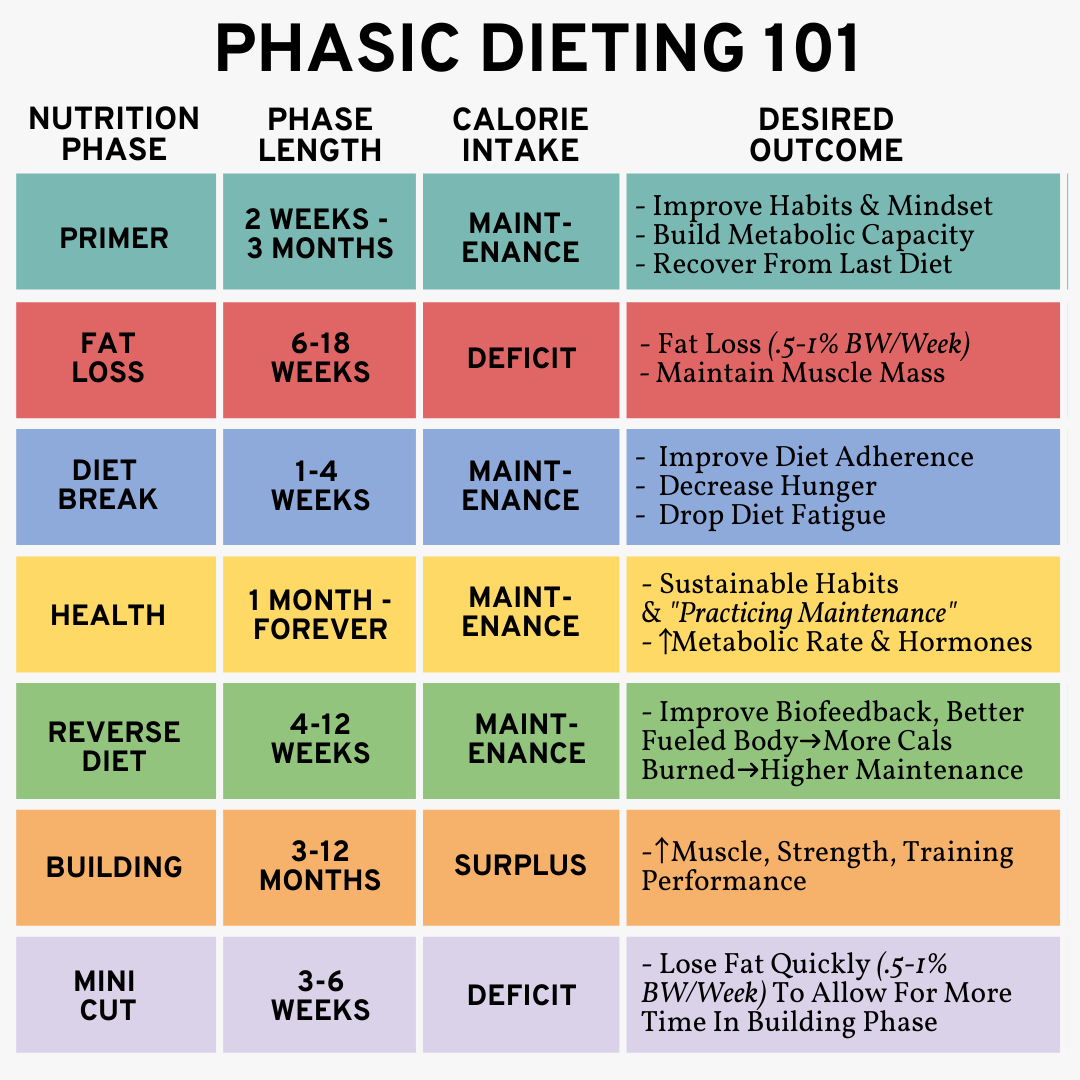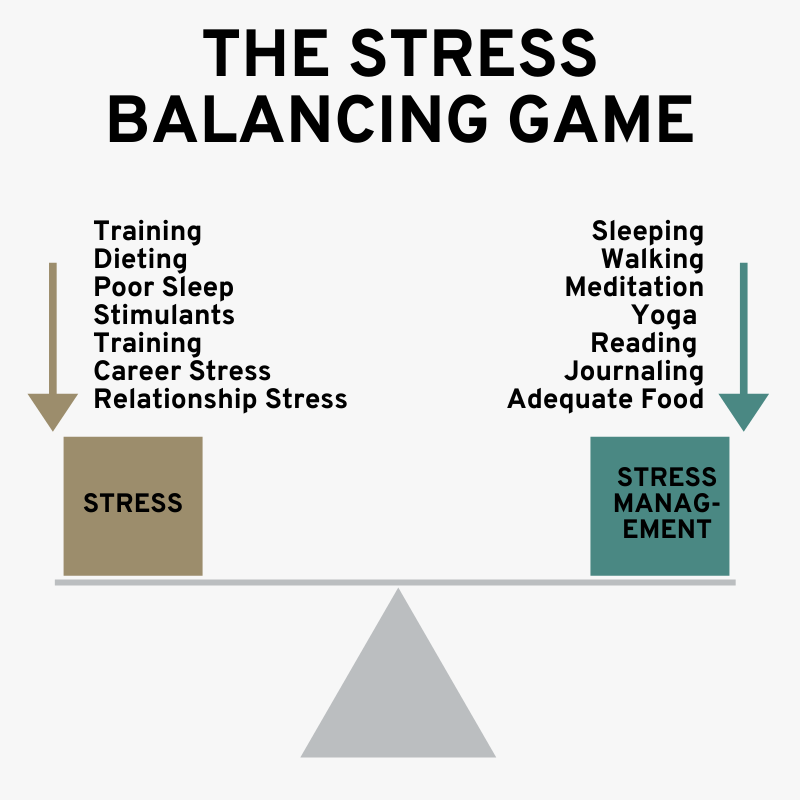I (Coach Andrea) have been a competitive person my entire life. I've missed the competition aspect to training since having my second son and not competing in powerlifting any longer.
As a physique-focused lifter there are pretty limited options when it comes to competition.
Physique/bodybuilding competition is what you mainly hear about (and that’s a great option for a lot of athletes!)
→ You get to push yourself to an extreme and get your body into a condition you’ve never been in before.
→ You get to show off all of the hard work you’ve put in lifting for years.
→You get to have a judge tell you where you rank and what you can do to improve.
But it’s not something I’ve ever really wanted to do... and to succeed in that sport you have to be all-in.
Just like all of our clients, I want to look lean & strong and feel ultra-confident in my physique... but I don't want to get on a bodybuilding stage.
So when looking for a new challenge to push myself to, I determined the next best option for me was a photoshoot prep.
A lot of our online clients also decide to take on getting in the best shape of their lives for a photoshoot... it's a great way to push yourself physically and mentally to new levels you didn't know you were capable of... without having to hop on a bodybuilding stage.
You still get to push your body to an extreme and have focus on a goal that is intensified by accountability of being in front of the camera on a specific date.
A few of our clients that have prepped for photoshoots in the last couple of months:


So starting in mid-2020 I started working toward the goal of getting photoshoot ready.
If the process of prepping for a shoot is something that interests you, check out our client photoshoot prep case study blogs:
→ Jeff's Photoshoot Peak Week Protocol
→ Rachel's 6 Month Photoshoot Transformation
There are a lot of lessons taken from that journey before, during, and after the actual diet that you can take and apply to your own diet, whether that’s just for general health or for a photoshoot prep of your own.
LESSON 1: SPEND TIME NOT DIETING
Listen, I get it... when you're set on getting leaner, the last thing you want to do is spend months prepping for a successful diet.
Because let's be real - we all want the result yesterday.
But it's important to spend time making sure you are set up for a successful diet as it will save you time and frustration in the end (Plus. you’ll end up with a way easier cut and a better end result.)
So as mentioned, I started preparing to do a photoshoot in mid 2020. I hired a coach of my own (even coaches need coaches) in October of 2020... but didn’t begin dieting until the summer of 2021.
The first several months were spent looking at bloodwork, testing blood glucose levels (and getting those in a better spot), eating enough calories, and training to build some muscle (basically making sure I was healthy before throwing me into a calorie deficit.)
This is why we have our clients follow our Phasic Dieting Method - meaning our clients aren't always dieting - even in a fat loss phase, they'll still have times where they’re eating at maintenance throughout the fat loss phase (like diet breaks and refeeds.)

It's so important to understand that before you enter a fat loss phase, you have a plan laid out for the health phase after the diet where you'll spend time focused on maintaining and restoring health.
Basically, maintenance is where your body thrives. When you’re eating at maintenance you can improve your health, performance, muscle mass, and have the flexibility for date nights, holidays, and just not feeling hungry all the time.
During a maintenance phase you will:
→ Increase hormones like testosterone, thyroid, and leptin
→ You’ll naturally move more (N.E.A.T.) and burn more energy during training because you’ll have the fuel to have more energy
→ Chronic stress on your system is decreased because you’ll have the micronutrients and macronutrients available
So to look at this from the bigger picture of achieving your long-term goal:
You could jump into a fat loss phase right now and go for the instant gratification.
In that case you might lose a few pounds now and feel good about that but feel like you have to white knuckle yourself through to maintain that progress.
Thinking long term mean like planning out the next year or more like we do with clients. Not what do you want to look like in 3 months, but what do you want to look like this time next year, or summer 2 years from now.
Planning or periodizing like this is the crux of our Phasic Dieting Method, and it entails ensuring your body is truly ready to diet now, having a plan for approximately how long you’ll diet, and what the reverse diet and health phase need to look like afterwards to maintain your results long-term.
[To grab a 100% free guide that gives you a simple breakdown of our Phasic Dieting Method that you can implement immediately to FINALLY see the fat loss results you’ve been chasing for years (without any stupid cardio or god-awful crash diets), just click here.]
LESSON 2: CREATE A FLEXIBLE MEAL PLAN
The number one thing you can do to set yourself up for success in a fat loss phase is set up a flexible meal plan for yourself.
[*NOTE: This is not a meal plan created for you by a coach.]
Most good coaches will advise against having a meal plan created by someone that you blindly follow. A meal plan like that is typically lacking in nutrients, and it is very unlikely someone will follow a meal plan for long enough to see meaningful changes.
A flexible meal plan you create for yourself is much more sustainable because it’s comprised of meals you decide on and fit your taste.
The flexibility aspect of it also means you have a plan for when things don’t go perfectly and your meal plan needs to change.
In the beginning of my fat loss phase my carbs and calories were still high enough that I had a meal plan for the first 3 meals of the day and made the dinner with my family fit my macros.
As time went on and my macros got lower I had a meal plan for all 4 meals.
Sticking to these same meals nearly every day helped in several ways:
→ I didn’t have to come up with new meals to fit my numbers on a daily basis.
→ I knew the groceries I needed to keep on hand.
→ My digestion wasn’t a factor.
→ It minimized the decisions I needed to make which saves energy.
→ It leaves less room for veering off plan.
Here are the steps on exactly how to create a flexible meal plan for yourself (For the full blog post on it click HERE):
1. Choose how many different "template days" you'll need for the week:
Again, usually 1-2.
From here, you’ll simply be plugging foods into MyFitnessPal (or your macro tracking app of choice) to create a plan for these days that aligns with your macros.
2. Choose your preferred number of meals:
3-5 meals/snacks daily works best for most.
Choose times you can consistently eat each meal, and stick to those → this helps prevent cycles of under/overeating, or playing “macro tetris” too often.
3. Plan your proteins:
Choose a primary protein source for each of your meals, & adjust the serving size until it gives you 25-50g protein, OR add another protein source to reach the 25-50g range. (We want to divide protein evenly between meals, most will hit their goal with 25-50g at each meal.) ⠀
4. Plan your carbs:
Now you'll know what carb sources will pair well with your proteins → choose 1-2 carb sources for each meal, and adjust serving sizes to fit your macros
Making the meals around your workouts more carb heavy is more optimal.⠀
5. Plan your fats:
Your protein (and some carb) sources will have fat, so we're waiting until last to add fats as needed to meals.
(Timing these further from your workouts is more optimal.)
Now you have a template day planned out.
Figure out how many times you’ll be repeating it during the week, so you know how much food to get while prepping.
LESSON 3: STRESS MANAGEMENT MATTERS
In the past I have always kept training constant throughout different dieting phases. I had never taken into account having lower energy intake and responding with lower training volume.
Most people take that same approach because they think they need to burn more calories via training.
The truth is, you aren’t burning a significant amount of calories during training, and the fat loss you see will come as a result of your diet.
So with that in mind you won’t notice any negative effects from bringing training volume down a bit while you’re deeper into a calorie deficit.
The reason for this is stress management and recovery.
All sources of stress go into one “stress bucket”, not into multiple different categories when it comes to your body.
This total accumulation of stress is called your allostatic load.
Stress from money, relationships, work, diet, training, poor diet quality, poor sleep, etc. all add to your allostatic load.
When you’re in a large calorie deficit and losing body fat, that adds to your allostatic load on top of all of your other sources of stress.
You’re also directly taking fuel away from what your body could use as a recovery resource.
Of course you want to control stress from other areas, but one thing you have direct control over is your training stimulus.
When your stress is high and recovery resources are low, you can easily overextend with high training volume and not be able to optimally recover (your maximum recoverable volume has lowered.)
Practically speaking this means you might need to go from 5-6 training days to 3-5.
You also want to keep your training phase to longer rest periods and slightly lower rep ranges so you’re not creating a large glycogen demand (since you probably won’t have the carbohydrates available to fuel that type of training.)
When we’re overly stressed and have high cortisol (stress hormone), it causes a negative spiral.
If you stay in that negative spiral for too long it can cause major issues with things like thyroid function, sex hormone production, appetite regulation, digestive health, and so on.
The negative spiral starts out with high stress causing your cortisol rhythm to be thrown off. Your cortisol is supposed to be high in the morning to wake you up, and low at night so you can go to sleep.
If that gets disrupted you have a hard time falling asleep, staying asleep, or getting good quality sleep... which means stress goes up even more.
Poor sleep and stress have major effects on fat loss, muscle gain, and muscle retention.
To illustrate this, a 2010 study looked at the effects restricted sleep has on muscle mass and fat loss:
→ Participants were split into two groups: An 8 hour per night sleep group, and a 5.5 per night sleep group.
→ The researchers measured loss of fat and lean tissue.
→ They also measured changes in substrate utilization (the use of fat and carbohydrate by the body for energy), energy expenditure (calorie burn), hunger, and 24-hour metabolic hormone concentrations.
RESULTS:
“Sleep curtailment decreased the proportion of weight lost as fat by 55% (1.4 vs. 0.6 kg with 8.5 vs. 5.5 hours of sleep opportunity, respectively; P = 0.043) and increased the loss of fat-free body mass by 60% (1.5 vs. 2.4 kg; P = 0.002).
This was accompanied by markers of enhanced neuroendocrine adaptation to caloric restriction, increased hunger, and a shift in relative substrate utilization toward oxidation of less fat.”
SCIENCE TRANSLATOR 🤓
The people who only slept 5.5 hours per night lost about 2 pounds less fat in 2 weeks, and also lost 2 pounds more of lean mass (not the type of weight you want to be losing!)
They also started adapting hormonally to calorie restriction (down-regulating calorie output to adapt to the restriction), were hungrier, and burned less fat for fuel.
When dieting, we’re generally doing everything we can to burn the highest amount of body fat and preserve the most muscle mass possible, so these are the exact opposite results of what you’d hope for on a fat loss diet.
For me, the stress I experienced had an affect on my fasted blood glucose numbers increasing (one of the more tangible ways we can measure stress levels for clients). But understand that for you it could present differently.
Regardless of how stress manifests in your body, you’ll have an easier time with fat loss and end up with a much healthier end product if you manage your stress well.
Managing stress can be more simple than you may think. I like to think of stress and stress-reduction in terms of the scales of justice:

On one side you have the inputs that are adding stress.
On the other side you have inputs that are reducing stress.
You don’t want the stress side to weigh more than the stress reduction side.
That means you can reduce stressors where you can, or you can add things that will be more calming and parasympathetic.
Parasympathetic activities can be anything you personally enjoy and relax you (that don’t add stress to your body–sorry, lifting and running don’t count for this).
Some examples of this could be:
→ Walking, especially in nature
→ Meditation and/or prayer
→ Yoga
→ Reading
→ Journaling
→Coloring
LESSON 4: GET HELP
The first thing I did, that you can and should apply as well, was hire a coach for expert guidance and accountability.
Even being a coach myself, I learned a ton from having my own coach, and it’s an irreplaceable source of accountability.
The knowledge you’ll gain from having a coach is priceless, but the accountability of having someone to check in with on a weekly basis is a huge game-changer.
It’s really easy to make emotional decisions, and that only gets worse when you’re tired and hungry.
Having someone there to push you to work hard when necessary helps and that’s what most people probably think of with a trainer or coach.
But one of the biggest things my coach did for me was pull me back.
As someone who loves lifting, exercise, caffeine, and pushing myself, it was a big lesson for me to have someone pulling on the reigns telling me when it was time to eat more or take a few rest days.
When progress wasn’t fast enough that’s not something I would have done on my own.
A friend or family member as a support system is great and it’s important that the people in your life are supportive of you. But they’re typically not a great source of accountability when things get hard.
They’re probably not going to give you the tough love you might need when you’re hungry and want to go out for some food that won’t be conducive to your goals.
They want to see you happy (and probably want that food themselves too!), so in that moment might be more of an enabler than an objective eye, despite best intentions.
Hire a coach to guide you and keep you accountable to what you want long term. It’s worth the investment and will give way more value than the money you spend on it.
If you found this helpful but need some help creating a personalized training and nutrition plan to hit your physique goals, and potentially even prep for your own photoshoot, click here now to schedule a free discovery call with our coaching team.

WRITTEN FOR YOU BY ANDREA RODGERS
Andrea Rogers is a certified nutrition coach, personal trainer, and coach for BairFit. Follow her on Instagram for more helpful training & nutrition content.
Keep Learning

Food Quality Vs. If It Fits Your MacrosProject type

How To Set (And Adjust) Your Macros For Any GoalProject type

The Glute Growth Blueprint [Feat. Alex Bush]Project type

The Ultimate Guide To Flexible DietingProject type

The Fat Loss GuideProject type

How To Fix Stalled Fat LossProject type

The Best Diet To Lose Weight Postpartum - backupProject type

How To End A Diet (Without Losing Your Results)Project type

The Best Diet To Lose Weight PostpartumProject type

The 5 Keys To Maintaining Weight Loss ForeverProject type

How To Use Nutrition Periodization For Fat LossProject type

5 Ways To Get (and stay) MotivatedProject type

The Best Exercises For Building GlutesProject type

How To Hit Your Macros While TravelingProject type

The 6 Keys To Building Muscle For WomenProject type

Mom Of Five Photoshoot Prep (Nutrition Protocol, Training Strategy, Macro Adjustments, And More)Project type

Why Your Macros Aren't Working For Fat LossProject type

The Best Nutrition Strategy For Building MuscleProject type

Should You Bulk Or Cut First?Project type

Mom Of Five Photoshoot Prep (Nutrition Protocol, Training Strategy, Macro Adjustments, And More) - backupProject type

How To Sleep For Muscle Growth & Fat LossProject type

The Stubborn Muscle Solution For Your Delts, Quads, Hamstrings, and Back (Finally See Growth!)Project type

[GUIDE] The Best Diet To Get Lean In 12 WeeksProject type

Thyroid Health 101Project type

How To Change Your Body Fat Set PointProject type

The Core Training BlueprintProject type

How To Minimize Hunger On A DietProject type

Do You Need To Reverse Diet? [When/Why/How]Project type

The Ultimate Guide To PowerbuildingProject type

[GUIDE] How To Do Your First Pull-UpProject type

Building The Female PhysiqueProject type

Nutrition For Aesthetics [Beyond The Basics]Project type

The Definitive Guide To Periodizing NutritionProject type

The Ultimate Mini Cut Guide [Rapid Fat Loss]Project type

[Peak Week Guide] How To Get Photoshoot ReadyProject type

The Rapid Fat Loss ProtocolProject type

The 6 Worst Nutrition Mistakes You're MakingProject type

The Shoulder Training BlueprintProject type

Diet Breaks 101 (What/Why/How)Project type

CALORIE CYCLING 101: 6 Methods To Get You LeanerProject type

HORMONES: Are They Killing Your Results?Project type

The Complete Guide To Getting Visible AbsProject type

The P3 Fat Loss MethodProject type

How To Fix Your Gut Health & DigestionProject type

[Client Case Study] Achieving Lifestyle LeanProject type

How To Find Your Ideal DietProject type

Is Insulin Making You Fat?Project type

Why Fat Loss Stalls [And What To Do]Project type

The Complete Guide To Training At HomeProject type

The Body Composition Change BlueprintProject type

The 6 Most Helpful Things I've Learned In The Last Year [Training, Nutrition, & Coaching]Project type

[Program Design Masterclass] The Full Body SplitProject type

[GUIDE] How To Avoid Holiday Fat GainProject type

Do You Need To Reverse Diet?Project type

How To Stay Lean While Traveling/On VacationProject type

Client Case Study: 6 Months To Photoshoot LeanProject type

[GUIDE] Beat The Skinny-Fat PhysiqueProject type

[10 TIPS] How To Stay Lean For LifeProject type

[KEY TO CLIENT SUCCESS] The Motivation ManualProject type

[GUIDE] The Core Training BlueprintProject type

Fat Loss For Women: The Complete GuideProject type

How To Get Bigger ArmsProject type

Strategies To Make Dieting Suck LessProject type

Dealing With Fat Loss StallsProject type

Compound Exercises vs. Isolation ExercisesProject type

Are Any Supplements Worth The Cost?Project type

7 Diet & Nutrition Tips For Fitness And HealthProject type

Is The Fitness Industry Full of Lies?Project type

The Lean Gains BlueprintProject type

My 3 Favorite Movements For Each Muscle GroupProject type

Can You Grow Your Calves or Is It All Genetics?Project type

The BEST Diet For Rapid Weight LossProject type

Does Eating Red Meat Cause Cancer?Project type

EVERYTHING You've Heard About Fat Loss Is A LIE.Project type

Is It Harder For Women To Get Abs?Project type

How To Get Toned ArmsProject type

How Often Should I Go To The Gym?Project type

How To Prioritize Cardio Vs. WeightliftingProject type

Does Gut Health Effect Weight Loss?Project type

Are Group Fitness Classes Effective?Project type

A Beginner's Guide To Intermittent FastingProject type

Can't Do A Chin-Up? Do This FirstProject type

Best Exercises For Defined ShouldersProject type

Fix Your Back PainProject type

Why can't I gain more muscleProject type

How to build great bicepsProject type

How to get AbsProject type

How to end a diet (without losing your results)Project type

The Best Diet To Lose Weight PostpartumProject type

The 5 Keys To Maintaining Weight Loss ForeverProject type




























































































